- Home
- Jay Bonansinga
Perfect Victim Page 5
Perfect Victim Read online
Page 5
And that’s how the note—and ultimately Tom Geisel’s time on earth—ignominiously came to an end.
SIX
“It’s just up ahead, near the end of the causeway, another mile or so,” Van Teigham was saying, pointing a manicured finger at the distant overcast horizon visible through the windshield. They were driving to the north end of the island, a scabrous stretch of marshland and trailer homes rusted out by the salt winds and Carolina sun.
“Where is the scene exactly?” Grove wanted to know as they thumped over traffic-control bumps. The fishy smell of the low country filtered through the window vent. It was nearly four o’clock, and the daylight was already starting to soften. The sky had a cellophane texture to it. Distant streaks of faint lightning veined the horizon-like tinsel.
“What do you mean? The street address?” The young field agent in his stylish haircut and Ralph Lauren suit made Grove nervous. There was an edge to the man that Grove couldn’t quite put his finger on.
“No, I mean in relation to the rest of the community. Is it in a gentrified area? Upscale resort area? Industrial pier—what?”
Van Teighman shot him a glance from behind the wheel. “My guess is you already know.”
“You folks use the zone system down here?”
“Yep, just like the big guys up north.”
“My guess is Zone II.”
Van Teigham gave him a nod. “You got it.”
The zone is a method of defining populated areas in terms of criminal activity. Zone I is usually a central business district. Zone II is a transitional area of warehouses, alleys, and mixed-use buildings sandwiched between a populated area and an unpopulated area. Nearly 80 percent of all violent crimes occur in Zone II. The average body dump also happens there.
“Lucky guess,” Grove muttered under his breath as he stared out the window. “I assume you got all the ME photos of the vic ready to go?”
“Absolutely, got the whole series on a light table back at the office.”
“How about evidence logs?”
“Yep, and we got the autopsy report an hour ago.”
“Pathology report?”
Van Teigham gave a nod as he made a sharp left turn, then headed down a sandy access road bordered by palmettos swaying in sea winds. “Got the lab stuff in my briefcase.”
“And?”
Van Teigham didn’t say anything for an excruciatingly long moment.
Then the young field agent finally looked over at Grove, and replied in such a somber tone it sounded as though he didn’t believe it himself. “It’s like when you wrote that book…you were thinking of this guy.”
The actual murder scene—at least the taped-off portion of the beach—was barely a hundred square feet, now crisscrossed in late-afternoon shadows from the adjacent pier. For nearly fifteen minutes, Grove silently circled this patch of coarse, weedy sand without saying a word, his eyes watering from the sting of ocean wind. Every few moments, one of his designer loafers would sink into the mire, and he would pull it free with a smucking noise. He wore surgical gloves and he carried a notepad, but he made very few notes. All he could do was marvel at the mathematical precision of the scene.
The murder had occurred fourteen to sixteen hours earlier near one of the massive salt-eaten pilings of the ramshackle Bogue Inlet pier. The positioning of the body, which had been carted away by the medical examiner earlier that afternoon, was marked by an outline of waterproof tape. The tide had sucked away half the bloodstains, leaving a sluggish leech trail of pink foam in its wake.
In his book Grove had discussed the average blood-spillage during the typical stranger-murder. Metrically speaking it was precisely 1.2 liters, and at the end of the chapter on patterns and signatures he included an illustration based on a computer model. Right now Grove was staring at a life-size, three-dimensional version of that illustration—especially the fan-shaped stain soaking the sand above the place at which Karen Wanda Finnerty’s head had come to rest.
Other aspects of the scene were stunningly faithful to the book. The perpetrator’s footprints—size eleven and a half E, according to Van Tiegham, the perfect average—tracked around the periphery. Tiny evidence flags marked each one, each position identical to the computer models of the book. Even the victimology—female, white, independent, age 42—matched the study down to the exact age.
Traces of buprenorphine, a form of methadone, were found in the bloodstreams of both women, as well as sodium thiopental, which Van Teigham attributed to the killer’s MO of sedation and control—yet another trait of the Archetype. A perfect rendering down to the chemical ratios.
“What’s that?” Grove pointed at a lone evidence flag jutting out of the sand a couple of yards to the left of the body-outline. He could only see a tangle of seaweed near the flag.
“I’m told there was writing,” Van Teigham replied from behind Grove. The young agent was watching Grove stalk the scene with a mixture of fascination and envy. The winds shook his pants as he shot a thumb at the ocean. “Tide got the better of it unfortunately.”
Grove blinked. “A note from the perp?”
“That’s right. Beat cop that was first on the scene saw it washing away in the tide.”
Grove glanced back at the lone evidence flag. A cold feather of dread ran down the back of his neck. He could feel the light darkening around him like a fist. In the back of his mind he saw that black, featureless target-silhouette of the every-killer. He closed his eyes and remembered the splintery handwriting of Tom Geisel, scrawled in the throes of a stroke: a dark figure, like a shadow…no face, just an outline. Grove shook off the errant thoughts, then pointed off to his right, indicating the four-foot square blanket of canvas that had been duct-taped up over one of the pilings. “What about that?”
“Oh yeah, forgot about that,” Van Teigham replied. “They put that up before the media showed up this morning, didn’t want to freak out the rubberneckers.”
The young agent trudged over to the piling, ripped off the canvas, and dropped it to the sand.
Grove gaped.
He heard faint voices whispering in his head, speaking foreign tongues, sounding like a million match tips striking all at once. A vague panic seized his chest as he stared at the bloodstain defacing the salt-silvered wood like a Rorschach of black ink in the dying light.
Van Teigham kept on chattering. “What I’m thinking here is, we start selecting anybody with the right background who has actually seen your book. I’m already running down Internet orders at the publisher. I’m sure you’ve got some ideas of your own?”
Grove could not form a reply.
The piling was the problem. Two distinct smudge patterns blossomed up from the point where the worm-eaten wood met the sand—less than five feet from the final position of the victim—like bloody leaves shooting up the stem of a flower. Grove gaped at these smudges with the awe of a Paleozoic ape staring at fire.
“Agent Grove?”
Grove could not make his mouth work, despite the fact that alarms were going off in his brain. The marks on the piling swam in his vision.
“Agent Grove? You all right?”
For reasons that were lost to him now, Grove had pulled three diagrams from his book prior to publication. One was a computer model of the most favored angle of entry found in the majority of wounds. Another was an artist’s conception of the most popular weapon used in the average motiveless murder—a twelve-inch Bowie-style hunting knife. And the third illustration—based on a computer-assisted rendering—was the median smudge pattern found at the average serial murder scene.
The winglike floret of smudges had been created on his own computer, and currently existed only in digital form on his hard drive at home.
Ulysses Grove was the only human being on earth who had ever seen that pattern.
The same pattern now adorned a rotten wood piling near a chalk outline on a deserted North Carolina beach.
On the trip back to Raleigh-Durham, Grove didn
’t say much. Van Teigham did the driving, and did most of the talking. He wanted to get headquarters involved and maybe get more personnel working the case, and perhaps even form a task force with Burt Milliken and the folks up at the Minneapolis field office. He also wanted to know if Grove could dedicate himself to the case 24-7. Grove was noncommittal, stoic, lost in his own thoughts. He did not mention the inexplicable bloodstains on the piling.
By the time they rolled into Raleigh-Durham International Airport, it was after dark and Van Teigham had taken the hint. “You sure there’s nothing wrong?” he asked as Grove climbed out of the car with this briefcase.
“I’ll be in touch, thanks,” Grove muttered without even shaking the guy’s hand.
Grove entered the terminal and went directly to the bank of pay phones. His cell reception was atrocious down here in the wide-open spaces, and he needed to check in with Maura before he did anything else. He needed time to think. Time to figure out what was happening.
She answered on the third ring. “Uly?”
“Hey, kiddo.”
A beat of silence. “Oh God, Uly.”
“What’s the matter?”
“I tried to call you.”
“Maura, what’s—?”
“Honey, Tom Geisel passed away at four-thirty this afternoon.”
SEVEN
Thomas Edward Geisel
1941–2008
PIONEERING CRIMINOLOGIST
SHAPED STUDY OF
SERIAL KILLERS
WASHINGTON, D.C.–One of the most important figures in the world of crime scene investigations has died at the age of 67. “He was a force of nature in the field of behavioral science,” said longtime colleague and protégé, Ulysses Grove. “He virtually invented protocols that are still used today by investigative units and detective squads around the world.”
Mr. Geisel died on Saturday, at Cedars-Sinai Medical Center in Washington, from complications resulting from a brain hemorrhage. He is survived by his wife, Lois Renata Geisel (née Moorland); his four children, Joseph (Brittany) of Pittsburgh, PA; Nathan (Karen) of Grand Rapids, MI, Cynthia Standiger (Jerome) of Sarasota, FL; and Peter (Mae) of New York, NY; and nine grandchildren. “He was a very special man,” his daughter, Cynthia, said from her home in Florida. “The children just adored him.”
Born in Ossining, New York, Mr. Geisel was educated at the prestigious Henniman School for Boys, and later at Harvard, where he received his doctorate in psychology. A stint at Bellvue Hospital’s violence ward in New York City led Mr. Geisel to a career in criminology, first with the NYPD, and later, in the 1960s, with the FBI.
During his long and notable career at the Bureau, Mr. Geisel took part in the apprehension and study of such infamous murderers as John Wayne Gacy, Jeffrey Dahmer, Richard Ackerman, Michael Doerr, and Henry David Splet.
Services will be held on Monday, June 12th, at 10:00 A.M., at the Shalom Funeral Home, 2000 N. Marsh Road, Richmond, VA. Interment to follow. In lieu of flowers, memorials in Mr. Geisel’s name may be made to the Temple Emanuel or the Jewish Children’s Bureau, 1278 S. Highland, Alexandria, VA.
For more information, contact the Shalom Funeral Home at (917) 765-4435.
The next day, Grove left the obituary as his home computer’s wallpaper throughout the afternoon for reasons that he would be hard-pressed to explain. It was his modest little shrine, a reminder of his loss imprinted in pixels of light, a temporary kaddish for the section chief. Grove remembered a Judaic blessing spoken at a crime scene once. Baruch dayan emet: Blessed is the one true judge.
“Get you anything?”
Maura’s voice startled Grove, who was standing at the window, gazing out at the darkening sky above the bay. He whirled. “What?”
She came over and put a hand on his shoulder. “Can I get you anything?”
“No. I mean…no, thanks. Where’s Aaron?”
“He’s down for a nap.”
“Good.”
“You okay?”
“No.”
She stroked the edge of his jaw. Her hand was cold. “I know. You might want to take something.”
He looked at her. “What do you mean? A sleeping pill?”
“It might be a good idea if you slept a little before the funeral.”
He turned and looked out at the dwindling daylight. “I’ll be fine.”
He hadn’t slept for thirty-six hours, and he was starting to see bright white spots on the edge of his vision and feel dizzy with fatigue. He had no appetite, and had no energy to open the e-mails piling up on his work account, most of them from David Van Teigham. He knew he had to face the Archetype Case—which was how he was coming to think of the strange murders ripped from the pages of his book—and he knew he had to face the possibility that the killings were connected in some bizarre way with Tom Geisel’s death.
But right now all he could see in his mind was a crack in the universe.
“I got Martha Washington to babysit tomorrow during the service.” Maura’s voice sounded odd, brittle, humorless, as she stared at the back of his head.
“Very funny,” Grove muttered, not taking his gaze off the ashy dark clouds over the Atlantic. “I don’t get it.”
“What.”
“The joke.”
Maura kept looking at the back of his head. “What joke?”
Grove turned and looked at her. “Martha Washington?”
“That’s her name, Uly. The lady from the daycare center. Big heavyset gal?”
Grove remembered now. “Oh right, right.” He turned back to the window. “I’m sure she’d make a fine first lady, too.”
“You bet your ass she would.”
Tears gathered in Grove’s eyes. He felt something break inside his chest. “You realize I never even knew my dad.”
Maura didn’t say anything, just put her hand on Grove’s shoulder and kept it there.
“I never even met the man.” Tears clouded Grove’s vision.
“Uly—”
“This is my fault.” His voice began to crack. “This happened because of me.”
“Uly, shut up now—”
“This all happened because of me.” He turned and put his arms around her and pressed his face into her neck. This horrible notion had been swimming around, sharklike, beneath the surface of his thoughts all day: that he was somehow responsible for his friend’s death in the wake of that hideous black silhouette of the every-killer.
“Hush now, Uly, hush,” she whispered and held him.
Grove let his tears come then, until he couldn’t see or hear or feel anymore.
EIGHT
The funeral came and went the next day in a solemn, melancholy blur. By mid-afternoon, trapped at the Geisel shiva, alone among a house full of grim-faced strangers, Maura Grove realized something was wrong. She realized this even before she saw her husband having an intense, clandestine conversation with the FBI director across the dining room of the crowded farmhouse.
The stately old home, which belonged to Lois Geisel’s brother, famed D.C. divorce attorney Danny Patton, had been seething all day with quiet undercurrents of nervous tension, most of which seemed to be radiating from Ulysses. He kept pulling various Bureau staffers into quiet alcoves to have hushed, tense conversations about some pressing matter that had nothing to do with mourning Tom Geisel. After four glasses of tepid chardonnay, Maura became convinced that her husband was being drawn into another dark labyrinth. She had seen it too many times—the mood swings, the cryptic dissembling.
Now, standing alone in the Patton kitchen, staring out the window blinds at the overcast afternoon, Maura could see her husband strolling the far reaches of the backyard with one of his students, both their faces looking dour and grave as they talked.
Maura felt a pang of jealousy, standing there with her glass of room-temperature wine, watching her husband confer with a voluptuous black girl named Drinkwater. Maura knew how much the students idolized Grove. Still, it was a ridiculous notion that Grove
would have an affair with one of his pupils. It stemmed from Maura’s own projections, her own insecurity about the current state of her marriage, and her uncertain future.
Standing there, nervously sipping her sour chardonnay, her thoughts drifted back to that bizarre moment last year when she herself had been the object of a young person’s desire.
The key incident—Maura had come to think of it this way, an incident, like a fender bender or a sprained ankle—had unraveled in such an innocuous series of events, it hardly seemed worth remembering. Ulysses had been out of town, consulting on a kidnapping in Indiana, when an unexpected visitor appeared on their doorstep. A young Bureau trainee named Benjamin Bard had come over ostensibly to hand-deliver, as was Bureau policy, a hard drive loaded with case files for upcoming expert-witness testimony. The kid had a lanky, rangy swimmer’s physique and a long blond ponytail, and when Maura offered him a cup of coffee, he smiled and pulled a joint from his pocket.
“You realize you’re married to a freaking legend?” he had asked her at one point, sitting at the kitchen table across from her, puffing his blunt, tossing his long blond straggles out of his face.
Then came the touch.
It wasn’t much as physical flirtations go, just a light squeeze of Maura’s bare forearm, which was resting on the table. But the young man’s hand had lingered just a millisecond longer than the duration of a friendly pat. “Must get lonely around here, though, with the maestro gone all the time,” the kid had murmured then, just in case Maura had missed all the blatant signals.
“Yeah, um….” She had immediately pulled away. Then she went over to the sink to regain her composure. She busied herself with the dishes, grasping for something to say, searching for just the right combination of rakish indifference, wry humor, and tart wisdom. But the perfect response remained out of reach, just beyond the limits of her improvisational skills. And she was just coming to this conclusion when she felt a presence skulk up behind her.

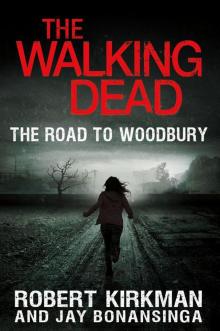 The Walking Dead: The Road to Woodbury
The Walking Dead: The Road to Woodbury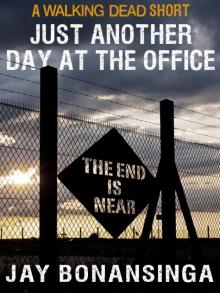 Just Another Day at the Office
Just Another Day at the Office The Fall of the Governor: Part One
The Fall of the Governor: Part One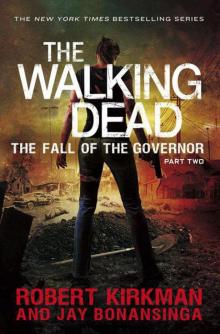 The Walking Dead: The Fall of the Governor: Part Two
The Walking Dead: The Fall of the Governor: Part Two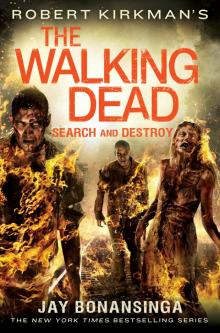 Search and Destroy
Search and Destroy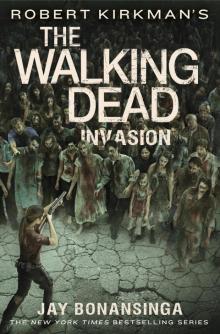 Invasion
Invasion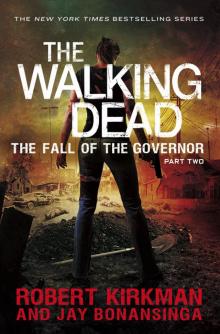 The Fall of the Governor: Part Two
The Fall of the Governor: Part Two The Walking Dead Collection
The Walking Dead Collection The Walking Dead
The Walking Dead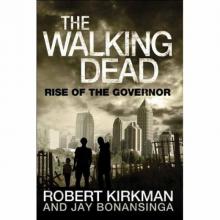 Descent
Descent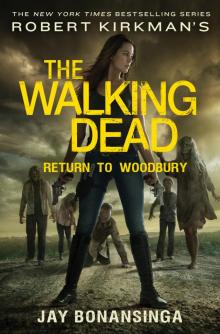 The Walking Dead: Return to Woodbury
The Walking Dead: Return to Woodbury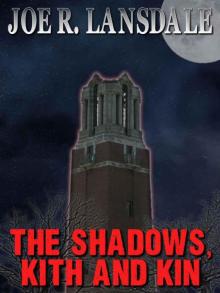 The Killer's Game
The Killer's Game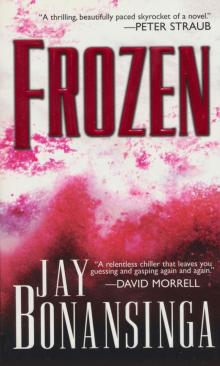 Frozen
Frozen Shattered
Shattered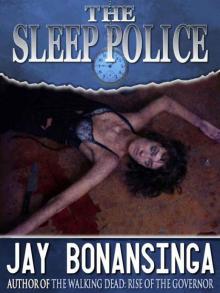 The Sleep Police
The Sleep Police Perfect Victim
Perfect Victim